Linear Regression T-test: Formula, Example
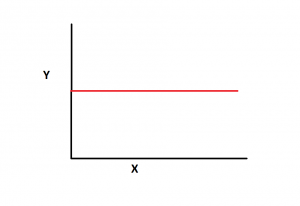
Last updated: 7th May, 2024 Linear regression is a popular statistical method used to model the relationship between a dependent variable and one or more independent variables. In linear regression, the t-test is a statistical hypothesis testing technique used to test the hypothesis related to the linearity of the relationship between the response variable and different predictor variables. In this blog, we will discuss linear regression and t-test and related formulas and examples. For a detailed read on linear regression, check out my related blog – Linear regression explained with real-life examples. T-tests are used in linear regression to determine if a particular independent variable (or feature) is statistically significant …
Feature Engineering in Machine Learning: Python Examples
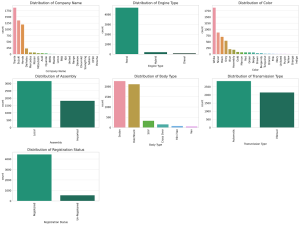
Last updated: 3rd May, 2024 Have you ever wondered why some machine learning models perform exceptionally well while others don’t? Could the magic ingredient be something other than the algorithm itself? The answer is often “Yes,” and the magic ingredient is feature engineering. Good feature engineering can make or break a model. In this blog, we will demystify various techniques for feature engineering, including feature extraction, interaction features, encoding categorical variables, feature scaling, and feature selection. To demonstrate these methods, we’ll use a real-world dataset containing car sales data. This dataset includes a variety of features such as ‘Company Name’, ‘Model Name’, ‘Price’, ‘Model Year’, ‘Mileage’, and more. Through this …
Feature Selection vs Feature Extraction: Machine Learning
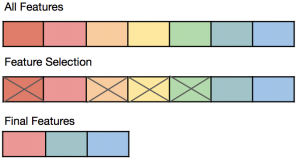
Last updated: 2nd May, 2024 The success of machine learning models often depends on the quality of the features used to train them. This is where the concepts of feature extraction and feature selection come in. In this blog post, we’ll explore the difference between feature selection and feature extraction, two key techniques used as part of feature engineering in machine learning to optimize feature sets for better model performance. Both feature selection and feature extraction are used for dimensionality reduction which is key to reducing model complexity given that higher model complexity often results in overfitting. We’ll provide examples of how they can be applied in real-world scenarios. If …
Model Selection by Evaluating Bias & Variance: Example
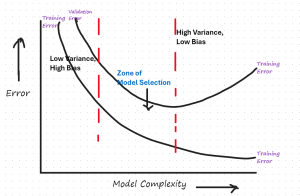
When working on a machine learning project, one of the key challenges faced by data scientists/machine learning engineers is to select the most appropriate model that generalizes well to unseen datasets. To achieve the best generalization on unseen data, the model’s bias and variance need to be balanced. In this post, we’ll explore how to visualize and interpret the trade-off between bias and variance using a residual error vs. model complexity plot. We’ll use a specific plot to guide our discussion. The following is the residual error vs model complexity plot that would need to be drawn for evaluating the model bias vs variance for model selection. We will learn …
Bias-Variance Trade-off in Machine Learning: Examples
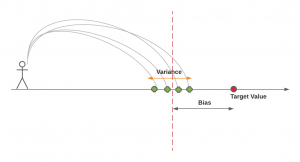
Last updated: 1st May, 2024 The bias-variance trade-off is a fundamental concept in machine learning that presents a challenging dilemma for data scientists. It relates to the problem of simultaneously minimizing two sources of residual error that prevent supervised learning algorithms from generalizing beyond their training data. These two sources of error are related to Bias and Variance. Bias-related errors refer to the error due to overly simplistic machine learning models. Variance-related errors refer to the error due to too much complexity in the models. In this post, you will learn about the concepts of bias & variance in the machine learning (ML) models. You will learn about the tradeoff between bias …
Mean Squared Error vs Cross Entropy Loss Function
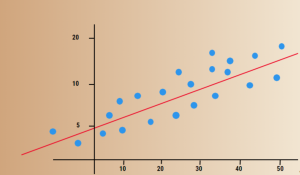
Last updated: 1st May, 2024 As a data scientist, understanding the nuances of various cost functions is critical for building high-performance machine learning models. Choosing the right cost function can significantly impact the performance of your model and determine how well it generalizes to unseen data. In this blog post, we will delve into two widely used cost functions: Mean Squared Error (MSE) and Cross Entropy Loss. By comparing their properties, applications, and trade-offs, we aim to provide you with a solid foundation for selecting the most suitable loss function for your specific problem. Cost functions play a pivotal role in training machine learning models as they quantify the difference …
Cross Entropy Loss Explained with Python Examples
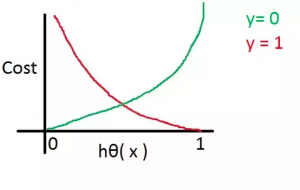
Last updated: 1st May, 2024 In this post, you will learn the concepts related to the cross-entropy loss function along with Python code examples and which machine learning algorithms use the cross-entropy loss function as an objective function for training the models. Cross-entropy loss represents a loss function for models that predict the probability value as output (probability distribution as output). Logistic regression is one such algorithm whose output is a probability distribution. You may want to check out the details on how cross-entropy loss is related to information theory and entropy concepts – Information theory & machine learning: Concepts What’s Cross-Entropy Loss? Cross-entropy loss, also known as negative log-likelihood …
Gradient Descent in Machine Learning: Python Examples
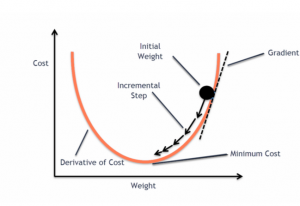
Last updated: 22nd April, 2024 This post will teach you about the gradient descent algorithm and its importance in training machine learning models. For a data scientist, it is of utmost importance to get a good grasp on the concepts of gradient descent algorithm as it is widely used for optimizing/minimizing the objective function / loss function / cost function related to various machine learning models such as regression, neural network, etc. in terms of learning optimal weights/parameters. This algorithm is essential because it underpins many machine learning models, enabling them to learn from data by optimizing their performance. Introduction to Gradient Descent Algorithm The gradient descent algorithm is an optimization …
Loss Function vs Cost Function vs Objective Function: Examples
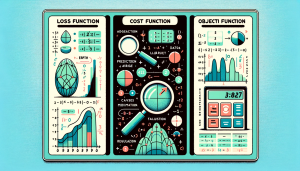
Last updated: 19th April, 2024 Among the terminologies used in training machine learning models, the concepts of loss function, cost function, and objective function often cause a fair amount of confusion, especially for aspiring data scientists and practitioners in the early stages of their careers. The reason for this confusion isn’t unfounded, as these terms are similar / closely related, often used interchangeably, and yet, they are different and serve distinct purposes in the realm of machine learning algorithms. Understanding the differences and specific roles of loss function, cost function, and objective function is more than a mere exercise in academic rigor. By grasping these concepts, data scientists can make …
6 Game-Changing Features of ChatGPT’s Latest Upgrade
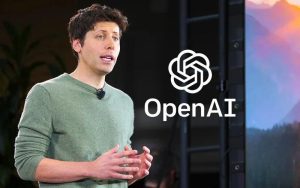
OpenAI has once again set the tech world abuzz with its latest enhancement to ChatGPT, making it a lot easier to use. With a clear focus on user-friendliness and accessibility, this update marks a significant leap forward. Here are the updates on the latest features: Ease of Access: No Sign-Up Required The sign-up barrier has been eliminated, allowing instant access to its ChatGPT. This ensures that access to ChatGPT is just a click away for anyone curious enough to explore it. Customizable Creativity: Choose an Image Style The integration of DALL·E GPT into ChatGPT now includes an option to choose from various image styles, adding a layer of personalization to …
Self-Prediction vs Contrastive Learning: Examples
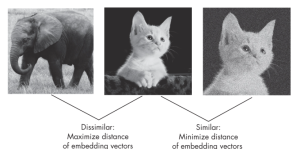
In the dynamic realm of AI, where labeled data is often scarce and costly, self-supervised learning helps unlock new machine learning use cases by harnessing the inherent structure of data for enhanced understanding without reliance on extensive labeled datasets as in the case of supervised learning. Simply speaking, self-supervised learning, at its core, is about teaching models to learn from the data itself, turning unlabeled data into a rich source of learning. There are two distinct methodologies used in self-supervised learning. They are the self-prediction method and contrastive learning method. In this blog, we will learn about their concepts and differences with the help of examples. What is the Self-Prediction …
Free IBM Data Sciences Courses on Coursera

In the rapidly evolving fields of Data Science and Artificial Intelligence, staying ahead means continually learning and adapting. In this blog, there is a list of around 20 free data science-related courses from IBM available on coursera.org that can help data science enthusiasts master different domains in AI / Data Science / Machine Learning. This list includes courses related to the core technical skills and knowledge needed to excel in these innovative fields. Foundational Knowledge: Understanding the essence of Data Science lays the groundwork for a successful career in this field. A solid foundation helps you grasp complex concepts easily and contributes to better decision-making, problem-solving, and the capacity to …
Self-Supervised Learning vs Transfer Learning: Examples
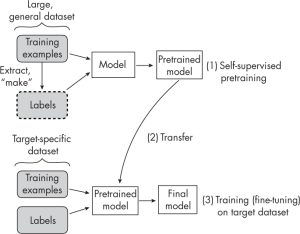
Last updated: 3rd March, 2024 Understanding the difference between self-supervised learning and transfer learning, along with their practical applications, is crucial for any data scientist looking to optimize model performance and efficiency. Self-supervised learning and transfer learning are two pivotal techniques in machine learning, each with its unique approach to leveraging data for model training. Transfer learning capitalizes on a model pre-trained on a broad dataset with diverse categories, to serve as a foundational model for a more specialized task. his method relies on labeled data, often requiring significant human effort to label. Self-supervised learning, in contrast, pre-trains models using unlabeled data, creatively generating its labels from the inherent structure …
OKRs vs KPIs vs KRAs: Differences and Examples
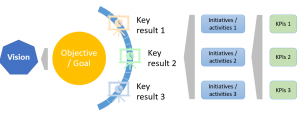
Last updated: 21st Feb, 2024 The difference between OKRs , KPIs, and KRAs is often confused, but the concept is a great way to measure the progress toward achieving your business objectives. As business analysts, product managers, and project or team leaders, it is important to understand the concepts of OKRs, KPIs, & KRAs and what’s the differences between them. In this blog post, we will discuss OKR vs KPI vs KRAs and how they can be used for setting goals/objectives and measuring different aspects of your team’s and organization’s performance in achieving those goals. We’ll also go over real-world examples so you can get a better understanding of how these metrics …
CEP vs Traditional Database Examples
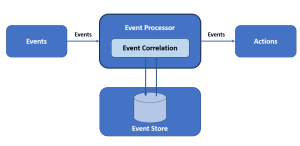
In this blog, we will learn about the differences between complex event processing (CEP) and traditional database querying with the help of examples. We will learn about how these two methodologies tackle data to extract meaningful insights but in fundamentally different ways. In complex event processing, data flows dynamically which is then matched with pre-defined patterns thereby generating insights in real-time. Traditional Database Querying In a conventional database querying scenario, the data is stored first, and then queries are run against this stored data to find patterns or retrieve information. This process is reactive, in that the query is formulated based on a need to find out something specific about …
Attention Mechanism in Transformers: Examples
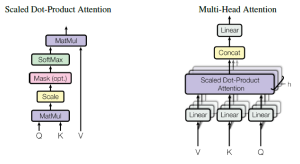
Last updated: 1st Feb, 2024 The attention mechanism allows the model to focus on relevant words or phrases when performing NLP tasks such as translating a sentence or answering a question. It is a critical component in transformers, a type of neural network architecture used in NLP tasks such as those related to LLMs. In this blog, we will delve into different aspects of the attention mechanism (also called an attention head), common approaches (such as self-attention, cross attention, etc.) to calculating and implementing attention, and learn the concepts with the help of real-world examples. You can get good details in this book: Generative Deep Learning by David Foster. You …
I found it very helpful. However the differences are not too understandable for me